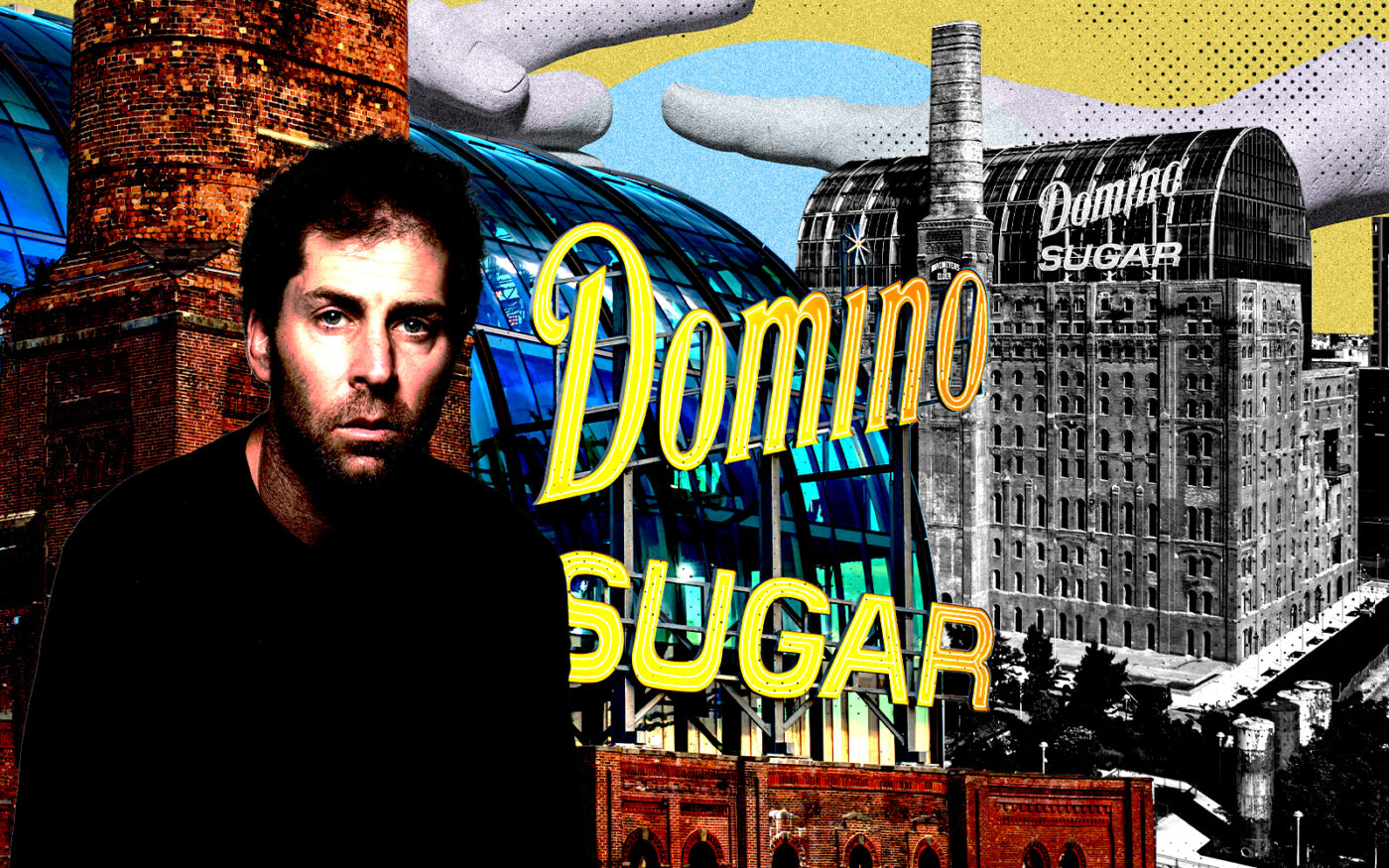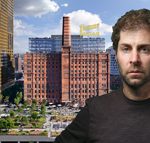 Two Trees snags $364M for Domino Sugar resi project
Two Trees snags $364M for Domino Sugar resi project
Trending
No anchor, no problem? Two Trees bets on office market with Domino Sugar revamp
The 15-story office space is the latest unveiling in the Brooklyn megaproject

The “crown jewel” of Two Tree Management’s Domino Park megaproject is finally open for business, but the cards haven’t dropped on the developer’s office gamble.
The reveal of Two Tree’s 460,000-square-foot, brick-and-glass adaptable reuse project is the culmination of 10 years of planning and careful coordination to restore and repurpose the landmarked Domino Sugar Refinery.
Now, all it needs is an anchor tenant.
Shortly after the Dumbo developer scooped up the proposed condominium project from the Community Preservation Corporation in 2012 for $185 million, Two Trees opted for an entirely different path. They returned to the public approval process to swap out their predecessor’s residential plans for Class A office space.
“No one trades residential for office space,” said the group’s spokesperson, David Lombino. “And that was in 2013. Flash forward to 2023, it seems even crazier.”
Jump-starting office attendance on the heels of the pandemic will prove to be the Domino site’s biggest hurdle, with the city’s office market struggling to reassert itself while some of the nation’s biggest employers scramble to get their employees back in the door.
And the building’s ribbon cutting hits at a particularly hard time. During the second quarter of this year, office leasing in Brooklyn activity fell by two-thirds compared to the first quarter of the year, according to a recent report by Colliers. Office space availability is also on the rise in the borough, increasing 23 percent, more than a three point increase since 2022.
Regardless of the uphill battle, Two Trees seems to feel pretty confident in its hand.
“The presence of workers here twenty four hours a day, seven days a week changes the character of the immediate neighborhood and makes it more lively. It allows us to attract different and better retail, not just dry cleaners and drug stores,” Lombino said. “That, in turn, helps the residential.”
Inside the sugar refinery, the developer is hoping to pull tenants from creative fields who will blend into the young, creative vision for the new community.
The 15-story site, designed by the Practice for Architecture and Urbanism, is an entirely new building nestled twelve feet inside the shell of the factory’s nearly 150-year-old exterior.
Those include a triple-height atrium lobby that features a restored brick installation from the original building. Scattered between the protruding wallface are striking swaths of rich foliage, maintaining the illusion of a crumbling ruin inside the lap of modernity.
Atop its roof, Two Trees has added a glass dome with an uninterrupted skyline view of Manhattan and, in the rear, of Brooklyn. Inside, the developer plans to offer an open-access event space that can be tapped into by future tenants.
That space got its debut on September 14, when it hosted luxury fashion house Hermès runway show and afterparty during New York Fashion Week, which drew the star-studded likes of Matt Damon, Casey Affleck, Natasha Lyonne and Tiffany Haddish.
Read more
 Two Trees snags $364M for Domino Sugar resi project
Two Trees snags $364M for Domino Sugar resi project
 Jamie Dimon to work-from-homers: You win
Jamie Dimon to work-from-homers: You win
 Two Trees' waterfront park at Domino Sugar Factory mega-project opens
Two Trees' waterfront park at Domino Sugar Factory mega-project opens
Two Tree’s unveiling of the refinery is just one leg of its massive, $3 billion overhaul of 11 acres along Williamsburg’s waterfront. The project so far features four newly-constructed buildings, including the reimagined sugar factory and 325 Kent Avenue, a rental property that opened its doors in 2017.
Steps away from the newly minted office space, Two Trees has planted two porcelain-clad towers standing at 52- and 39-stories that will offer 600 apartments between them. The developer anticipates that those residences will open their doors in May 2024.
The ultimate objective is a self-sustaining community on Williamsburg’s waterfront. The next challenge will be the remaining residential components of the project, which rely on the renewal or replacement of the property tax break 421a.




